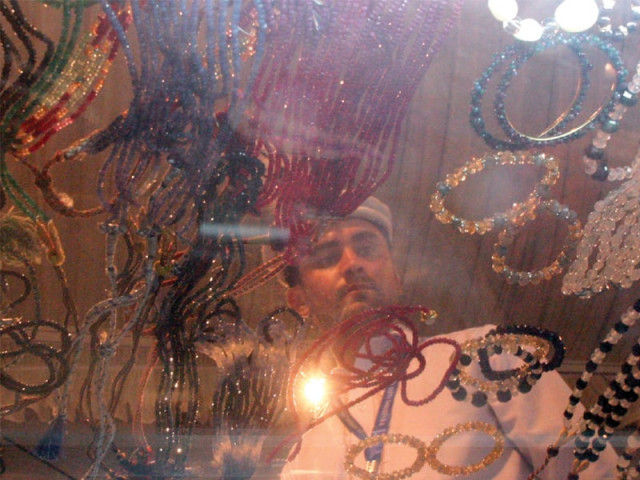Gemstone business: Shades of grey
The gemstone business is stuck in a whirlpool of exploitation and loss.

Raja Riaz Ahmed has been a part of the once lucrative gems business for the past six years. Having taken extensive courses in cutting and polishing precious and semi-precious stones from Gilgit-Baltistan, Ahmed now owns his own kiosk of valuable jewels in G-B. He employs 20 people and has taught the art of cutting and polishing gems to about 200 students.
Losing their shine
Ahmed is literally sitting on a gem mine but his life is devoid of sparkle. The businessman, who is currently displaying precious and semi-precious stones at the first Pakistan International Gems and Jewellery Exhibition at the Pearl Continental, Karachi, says his business never got the support it deserves.
He says the recent political strife in the G-B area has resulted in a complete shutdown of the gems business in 2012. “We faced losses in the entire month of April,” he laments. “There was no mobile connection that could connect us to the people around town. We were under complete house arrest.”
Ahmed’s teacher, gemologist Tariq Jamal also adds a tangent to the sad story. “Terrorist activities started way back in 1988,” he says. “Since then, gemstones have lost their importance to foreigners.”
A surprisingly small number of people are aware that Gilgit is the home of many precious and semi-precious stones like rubies and emeralds, sapphires, aquamarine, tourmaline, topaz, garnet and moonstone. “Seventy-five per cent of the world’s gems are based here,” states Jamal.
Gilgit may be a treasure trove of jewels, but it remains in the shadows when compared to larger centres such as Karachi and Lahore. One factor that explains this is Gilgit’s rigid geographical location. “A handful of foreigners take the pains to come all the way to Pakistan and search for precious gems,” explains Ahmed. The few that manage to enter the country come through strenuous routes such as the Chinese border and lose interest due to security and travelling issues.”
Jamal relates the unfortunate practice of some foreigners, who trick the underexposed businessmen of Gilgit into selling precious stones for less. “Some foreigners dupe shop owners who are unaware of the real value into selling precious and semi precious stones at lower prices.” He adds that since tourists have not been paying the actual price for the stone, the exercise has translated into losses for gemstone dealers and the people and their craft have been exploited.
A ray of hope
On a positive note, Jamal says that despite a persistent slump in the business, “we still have peak seasons during which the business sees a comparatively higher demand. June, July and August are the months during which tourists pour in which automatically pushes the demand up,” he explains.
Ahmed adds that one of their most dominant target groups are the people who still believe that birthstones bring felicity. “There is a strong belief amongst the locals that by wearing your birthstone one increases the chances of good fortune and abundance of wealth, health and prosperity.”
For the love of commerce
When asked if he supports such international exhibitions happening in the country where buyers from around the world visit these stalls Ahmed says, “Why not? These exhibitions lead to international links and networking and it is very good for the business.” He further adds, “They should take place all over the country and people should become aware of what is being produced on their land.”
The four day exhibition continues till Sunday evening.
Published in The Express Tribune, June 10th, 2012.



















COMMENTS
Comments are moderated and generally will be posted if they are on-topic and not abusive.
For more information, please see our Comments FAQ